 Lauren Mackiel Lauren Mackiel |
One of the most trusted and proven public relations tactics leveraged across consumer travel, hospitality and lifestyle industries is the familiarization press trip, aka the "FAM trip." A FAM is an immersive experience organized by a destination or brand—e.g., property, product or service—for traditional and social media influencers, as well as other key stakeholders, to better understand the offering. Ask any journalist or influencer, and they'll tell you there's no substitute for experiencing it first-hand to paint an extensive picture for their readers or followers.
As the world opens back up, regulations are lifted, and COVID travel guidelines are relaxed, the general consumer travel industry is eager to get traditional and social media influencers back on-site, immersed in all they have to offer. In fact, right now "revenge travel" is in full effect and doesn't seem to be slowing down.
"Revenge travel is a media buzzword that originated in 2021 when the world began to reopen, and people decided to make up for lost time," said Erika Richter, Vice President of the American Society of Travel Advisors.
| This article is featured in O'Dwyer's Jul. '22 Travel & Tourism PR Magazine (view PDF version) |
Knowing vacation/travel is booming, we interviewed top freelancers, staff journalists and key influencers in the consumer travel and lifestyle space to see how FAMs have evolved, what works—and what doesn't—and best practices to consider as part of your travel PR strategy. The individuals we interviewed collectively have taken hundreds of FAM trips over the last decade and have all hit the skies since 2021.
The following is a summary of key tips and considerations that every destination/brand should know before they plan their next FAM:
Smaller groups, please
Whether it's a four-to-five-day local/regional or international trip or a one-day/overnight experience, media and influencers are recommending—and often highly preferring—a smaller group experience (two to three media attendees, or even solo, versus a larger group). Why? For some, they feel they can connect more informally and naturally with a smaller group than in a larger setting. One consideration for smaller FAMs is extending an invite to one media member and asking them to recommend like-minded reporters/influencers who might fit in well together. It makes the entire immersion that much smoother.
Of course, there will be destination/industry FAMs that need to be larger, given traditional practices and expectations. However, in general, our feedback suggests a smaller group FAM lends itself to a greater experience, which absolutely impacts the final product (i.e., coverage).
|
|
| Photo: Cayman Islands Department of Tourism (CIDOT) |
Off the agenda
Whether it's a destination FAM or visiting journalist program, any PR professional familiar with the process has undoubtedly heard the need to build in "down time" or "free time" if the itinerary exceeds more than one day (i.e., the longer the FAM, the more free time included). Our interviewees resoundingly expressed a need for more off time in any multi-day itinerary. A general rule of thumb is up to five hours per day of downtime—the ideal—with recreational activities, such as zip-lining, excursions or group dinners optional.
They went on to share that often the unscheduled time—exploring and decompressing—allows for casual encounters that are crucial to their reporting/coverage. While interviewing key partners, meet and greets and touring properties are must-haves, but building in time for the unexpected—running into locals, having a meal in town—provided them with an insight that often became the lead for their piece/post, which resulted in a richer story all around.
Free time is a misnomer
The media continues to consolidate both from an overall outlet perspective and the number of reporters in any given newsroom or publishing house. Reality check: Journalists are working on five or more assignments at any given time; some are juggling seven to 10 stories a week, FAM or no FAM. Influencers? Typically, two to three, maybe more. PR pros should be sensitive to and understand the time challenges they face and spend extra attention building and providing a FAM experience that is truly exceptional and worthwhile.
Plus one
Another insight shared was the opportunity for media to bring a "plus one": in most cases, someone they know who has never been to the destination or location. Seeing a new place and experiencing it through another's eyes can be more impactful than seeing it for themselves. The benefits of exploring that world with a "newbie" provide a true benefit to the writer, but more importantly, to the reader, they're a built-in audience for the reporter as they determine their angle. For influencers, the same goes, but they often want a trusted photographer to tag along to make sure all assets are captured professionally.
Media and influencers are important
Bottom line, journalists and social media influencers are crucial to telling any brand story, piquing consumer interests and breaking through to new targets. However, their needs during a FAM can differ. Mixing writers and influencers with varying processes can be tough but not impossible. While influencers might require the most scenic/untapped locations to capture the perfect picture and supporting post, like journalists, they also seek an itinerary that makes sense for their following. They both suggest that FAMs include the "hot spots" but are also interested in the lesser-known areas that perhaps are under the radar. For traditional media, they need more access/time for interviews and expert insights. If your FAM plans don't include a mix of media/influencers, you might want to reconsider this; they're imperative to generating awareness on behalf of a destination/brand, but their itineraries should look a bit different and be flexible enough so they can split up to get their jobs done.
Another area that arose through our interviews was the ability to personalize FAM trip offerings—going back to tip number one—smaller groups may lend to more personalization where reporters and influencers can choose itinerary experiences that help build the story they feel will best highlight the destination or brand to their audiences.
As industry PR professionals, we have an opportunity to help improve and build better FAM experiences for our media and influencer partners, which will not only foster new and strengthen existing relationships with them but will ultimately generate greater awareness and richer storytelling for our clients.
***
Lauren Mackiel is SVP at Coyne PR.

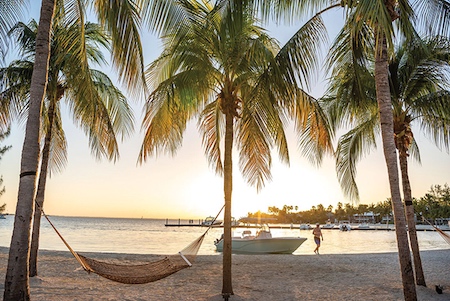 Seaside bliss at Cayman Kai on Grand Cayman, Cayman Islands.
Seaside bliss at Cayman Kai on Grand Cayman, Cayman Islands.
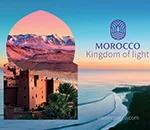 Weber Shandwick is providing PR and marketing communications services to the Moroccan National Tourist Office in New York.
Weber Shandwick is providing PR and marketing communications services to the Moroccan National Tourist Office in New York.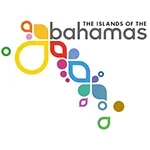 Finn Partners has filed its six-month contract with the Bahamas Ministry of Tourism, Investments & Aviation, which is worth $240K.
Finn Partners has filed its six-month contract with the Bahamas Ministry of Tourism, Investments & Aviation, which is worth $240K.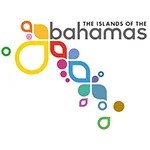 Weber Shandwick wrapped up its work for the Ministry of Bahamas at the end of 2023.
Weber Shandwick wrapped up its work for the Ministry of Bahamas at the end of 2023.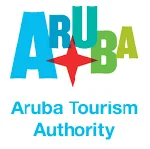 The Aruba Tourism Authority is boosting its budget 29.4 percent to $2.2M at Zeno Group, according to its 2024 contract, effective Jan. 1.
The Aruba Tourism Authority is boosting its budget 29.4 percent to $2.2M at Zeno Group, according to its 2024 contract, effective Jan. 1. As inflation continues to impact spending, consumers are revisiting their list of what they’re willing to spend more of their money on. Luckily for those in the travel industry, experiences seem to be trending up on the “splurge” list.
As inflation continues to impact spending, consumers are revisiting their list of what they’re willing to spend more of their money on. Luckily for those in the travel industry, experiences seem to be trending up on the “splurge” list. 


 Have a comment? Send it to
Have a comment? Send it to 
No comments have been submitted for this story yet.